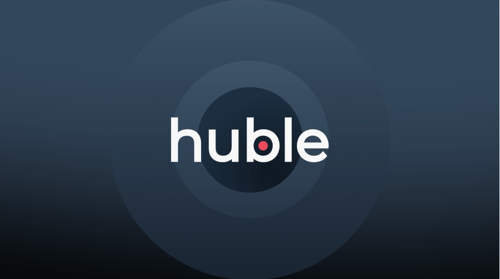TL;DR
-
Most healthcare CRMs fail not on tech, but on governance, auditability, and adoption. We design those in from day one.
-
We run ISO/IEC 27001:2022 (security) and ISO 9001:2015 (quality) across all locations, so change control, sign-offs, and evidence are a practice, not a promise.
-
Our delivery model includes documentation tiers, risk registers, decision logs, RBAC/least-privilege access, and UAT depth that match clinical and commercial risk.
If your CRM touches patients, “good enough” isn’t good enough
Private hospitals live in the grey zone between clinical governance and commercial reality. You’re juggling self-pay packages, consultant referrals, insurers, call-centre bookings, marketing campaigns, and post-op follow-ups — all while stewarding PHI under GDPR/UK-DPA and (often) HIPAA-informed contracting with US partners.
In that context, CRM failure isn’t just inconvenient; it creates reputational and regulatory risk.
Where CRM programmes typically go wrong:
-
No enterprise governance. Fields and objects multiply, pipelines diverge by site, and no one can defend which reports are “board-safe.” There’s no decision log, no risk register, no test evidence. Audit prep becomes a scramble.
-
Invisible plumbing. Ad-hoc integrations to EPR/PAS, billing, identity, telephony and forms run without contracts, lineage, or monitoring. Errors surface as complaints, not alerts.
-
Training ≠ adoption. Staff revert to spreadsheets and inboxes if the design adds friction at the moment of use. You see a two-week spike after training, then a cliff.
Compliance and audit as design inputs, not afterthoughts
In healthcare, compliance isn’t something you can tidy up later. Regulators, insurers, and patients all expect proof that their data is handled correctly, not promises that it will be.
Too often, CRMs are rolled out with security policies drafted afterwards, which only creates risk and anxiety for leadership teams. At Huble, we flip that order: compliance and audit-readiness are designed into the system from day one.
-
ISO-anchored delivery. Every office operates ISO/IEC 27001:2022 (info security) and ISO 9001:2015 (quality). In practice that means real change control, milestone sign-offs, encryption and access controls you can audit, and artefacts that stand up in risk committee reviews.
-
Sensitive-data & HIPAA contexts. We’re vetted in the HubSpot ecosystem to support HIPAA and sensitive-data implementations, which informs the design decisions we recommend (e.g., scoping, lawful basis mapping, redaction strategies, data-minimisation patterns).
-
Documentation tiers matched to risk. From Essentials (field dictionary, integration inventory, runbooks) to Enhanced (lineage, integration contracts, SLAs, decision logs) to Enterprise/regulated (DPIA templates, traceability matrices, test evidence archives). You pick the tier; we deliver the evidence.
Governance that protects clinical and commercial outcomes
Hospitals can’t afford ambiguity when it comes to decision-making. Without governance, every region or department builds its own processes, creating fragmentation and confusion. We’ve seen too many organisations paralysed because no one can show who approved what, or why. Our model ensures governance isn’t a side-meeting, but the backbone of delivery.
-
Standing governance forum. Sponsors and delivery leads meet regularly to review progress, remove blockers, and record decisions with owners.
-
Risk register + assumptions. Every programme starts with risks logged (probability, impact, owner, response) and assumptions/constraints made explicit.
-
Go-/No-go gates. Evidence-based gates replace opinion-led approvals, giving leaders confidence at each milestone.
-
Decision logs. Every key choice is documented, cutting the time and stress of regulatory reviews.
Security, consent, and quality by design
Security and consent are not features; they’re foundations. In healthcare, the smallest misstep in permissions or consent tracking can lead to regulatory fines and patient mistrust. That’s why we design security and consent management directly into the architecture of every HubSpot implementation we run for healthcare organisations.
-
RBAC and least privilege. Role-based access ensures front-of-house, referral coordinators, marketing, and clinical admin only see what they should — nothing more. Logged activity creates the audit spine.
-
Lawful basis & consent. We map lawful bases (consent, contract, vital interests) directly into properties, workflows, and templates. Retention and deletion workflows are formalised in SOPs.
-
Quality controls. Change control, sign-offs, and audit-ready artefacts mean every process can be evidenced inside ISO governance rhythms.
Data and integration in healthcare contexts
Healthcare IT estates are never tidy. Hospitals run legacy EPRs, billing platforms, identity tools, event apps, and more. A CRM can’t succeed unless all of these systems connect — visibly and reliably. The real differentiator is observability: spotting problems before they damage patient experience or trust.
-
Integration contracts. We define payloads, error states, owners, and monitoring up front so failures raise alerts before they hit patient journeys.
-
Structured migration with scope control. We migrate structured data deliberately (objects, properties, dedupe/consent states) and exclude unstructured blobs that bloat risk and cost.
-
Sandbox strategy. After go-live, changes move through sandbox environments, ensuring safety before clinical workflows are touched.
UAT matched to healthcare risk (goodbye checkbox testing)
Testing in healthcare isn’t about ticking boxes. It’s about proving that the system won’t put patients or the business at risk. That’s why we don’t just run through happy paths; we actively design tests around the nightmare scenarios healthcare leaders fear most.
-
Levelled UAT. From Lite (smoke tests on critical paths) to Full (role-based scripts across sites, negative tests, reconciliation, cutover rehearsals) to Enterprise (parallel-run, rollback playbooks, volume and accessibility checks, structured hypercare).
-
Negative paths. Wrong patient record selected; missing consent on re-engagement; duplicate identities after a bulk upload. We test those on purpose — and keep the evidence.
Change that changes behaviour (so adoption sticks)
Technology is wasted if staff don’t use it. In hospitals, change fatigue is real — clinicians and administrators won’t adopt a CRM unless it makes their job easier in the moment. That’s why our approach to adoption focuses on behaviour, not just training.
-
Friction mapping. We watch how staff actually work, and redesign steps where they would otherwise disengage.
-
Nudge architecture. Defaults that make sense, in-app checklists, contextual prompts at the point of need — not hidden in a manual.
-
Champions by function. Train-the-Trainer for clinical and commercial teams, with governance training for admins so capability survives turnover.
-
Meaningful gamification. Rewards tied to quality behaviours — timely follow-ups, accurate referrals — not vanity clicks.
After go-live: continuous compliance and improvement
Healthcare CRMs can’t be left to drift after go-live. Regulators update guidance, HubSpot releases new features, and staff turnover brings new training needs. That’s why we build a continuous rhythm into every healthcare rollout, so adoption and compliance don’t fade with time.
Why regulated healthcare providers choose Huble
Healthcare providers don’t choose Huble because we’re “big” or “global.” They choose us because our delivery model matches the compliance and adoption pressures they live with every day.
-
ISO/IEC 27001 & ISO 9001 across all offices. These certifications aren’t badges; they’re operating systems that shape every project.
-
HIPAA & sensitive-data expertise. As one of the few HubSpot partners vetted for sensitive-data implementations, we design specifically for healthcare’s regulatory realities.
-
Methodology proven in regulated contexts. Governance forums, risk registers, documentation tiers, deep UAT, and structured change management aren’t “extras” — they’re our standard practice.
Book a Healthcare CRM Readiness Session.
We’ll review governance, compliance exposure, data/integration risk, and adoption friction in your current setup, then give you a practical, evidence-backed action plan for your board or risk committee.












-3.png?width=500&height=320&name=Matt%20-%20imagery%20bank%20(8)-3.png)

